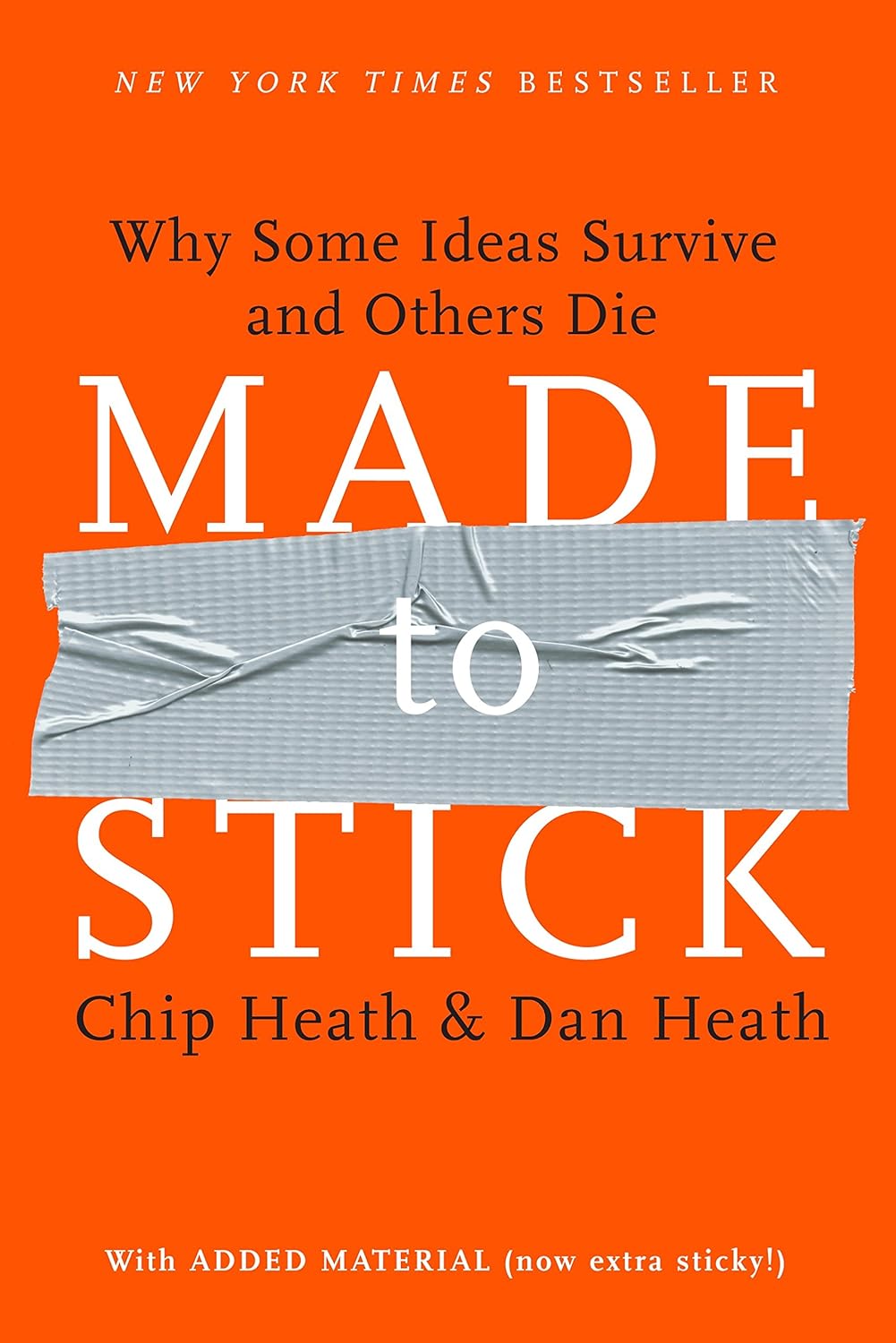Made to Stick
Heath, C. & Heath, D. (2007). Made to Stick. New York: Random House
The book “Made to Stick” by Heath and Heath discusses the principles of making ideas memorable and impactful. One metaphor presented in the book that sticks with me is the concept of “Mental Velcro.” What helps people retrieve thoughts and algorithms that are easily remembered and a person can recall it when needed.
Here’s a summary of the key points:
Frequency of Repetition: To make ideas stick, they need to be repeated consistently, ideally 12 to 52 times a year.
Six Principles of Sticky Ideas: SUCCESs Strategy:
- Simplicity: Craft a profound one-sentence statement that people can spend a lifetime learning from.
- Unexpectedness: Generate curiosity and interest by breaking predictable patterns.
- Concreteness: Use sensory information and concrete language to convey abstract truths.
- Credibility: Make ideas believable by using trustworthy sources and evidence.
- Emotions: Make people care about your ideas through emotional appeal.
- Stories: Use stories as mental simulators to convey ideas effectively.
The Curse of Knowledge: The main obstacle to effective communication is assuming that others have the same knowledge as you. To overcome it, simplify and transform your ideas.
Intent vs. Plan: Plans may not work in practice, so it’s essential to keep the intent in mind, especially in dynamic situations.
Idea Clinics: These are used to model the process of making ideas stickier, focusing on simplicity as “core + compact.”
Proverbs: Proverbs exist in many cultures because they offer simple rules of thumb for guiding individual behavior based on shared ethical or moral norms.
Getting Attention: To get someone’s attention, break predictable patterns and introduce surprise.
A Good Process for Sticky Ideas: Identify your core message, find what’s counterintuitive, break your audience’s guessing machines, and help them refine their thinking.
Examples: Companies like Disney humanize their operations, and teaching through mysteries can enhance learning.
The Power of Stories: Stories are effective teaching tools because they simulate action and provide inspiration.
Mental Simulation: Mental rehearsal and simulation can significantly improve performance in various activities.
65% of people will remember stories. 5% remember any individual statistic.
College professors take dozens of course in their areas of expertise but none on how to teach.
How to make it Stick:
- Pay attention UNEXPECTED
- Understand and remember it CONCRETE
- Agree/believe CREDIBLE
- Care EMOTIONAL
- Be able to act on it STORY
Three Basic Story Plots: Challenge plot, connection plot, and creativity plot can inspire and engage audiences.
Epilogue – What Sticks: People remember stories much better than statistics. To make ideas stick, they should be unexpected, concrete, credible, emotional, and told as a story.
In conclusion, “Made to Stick” provides insights into how to craft and communicate ideas that are memorable and impactful by

